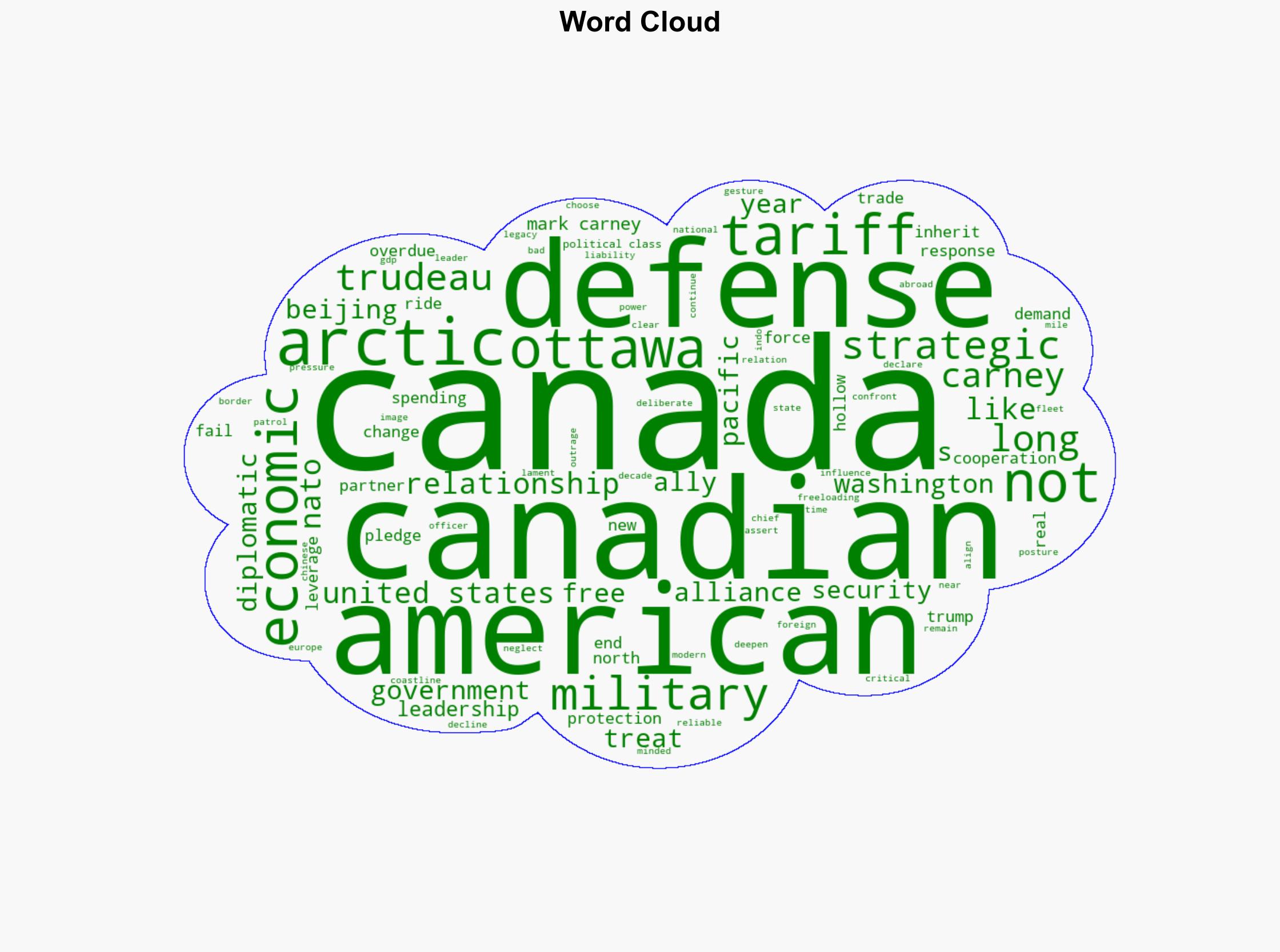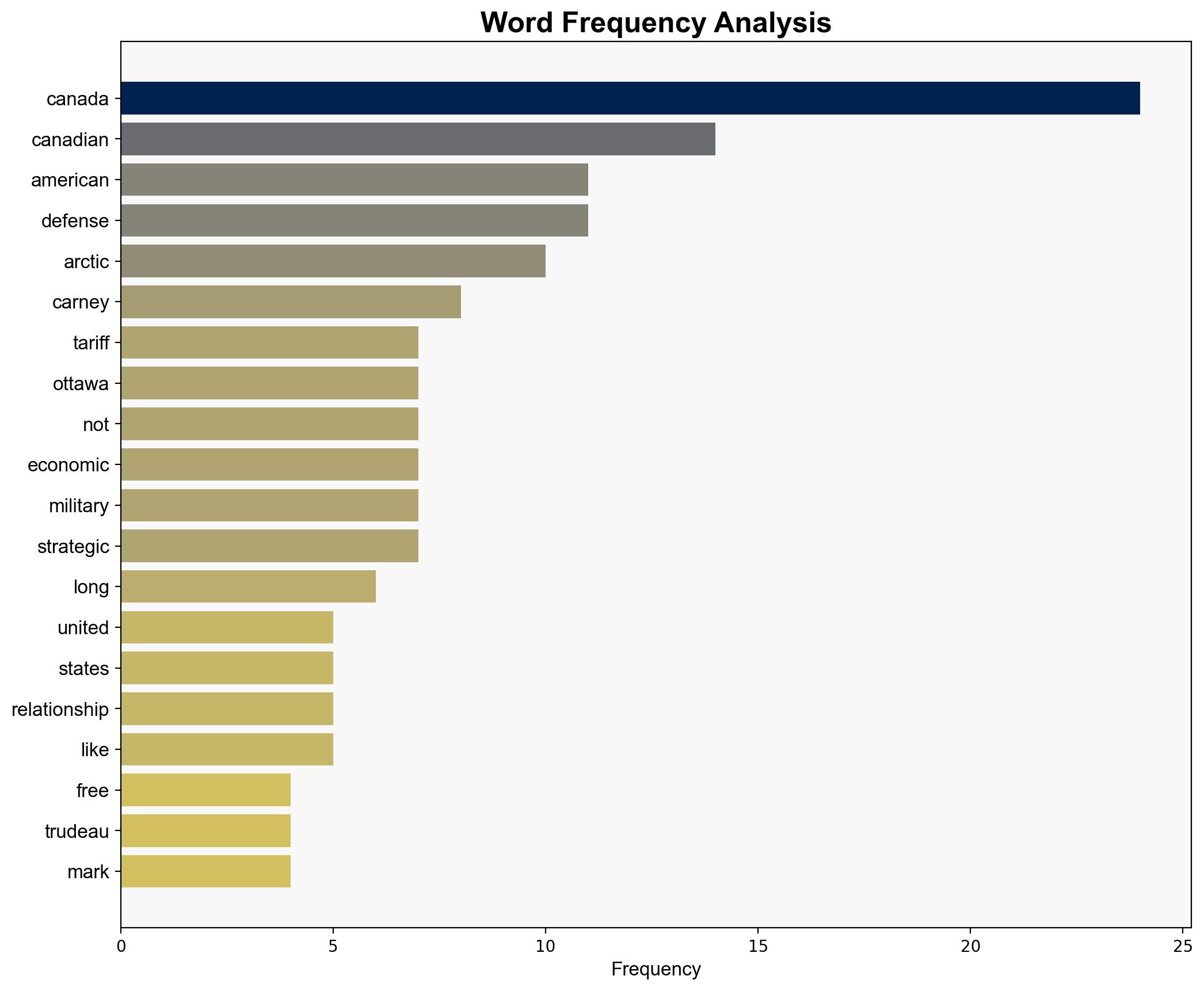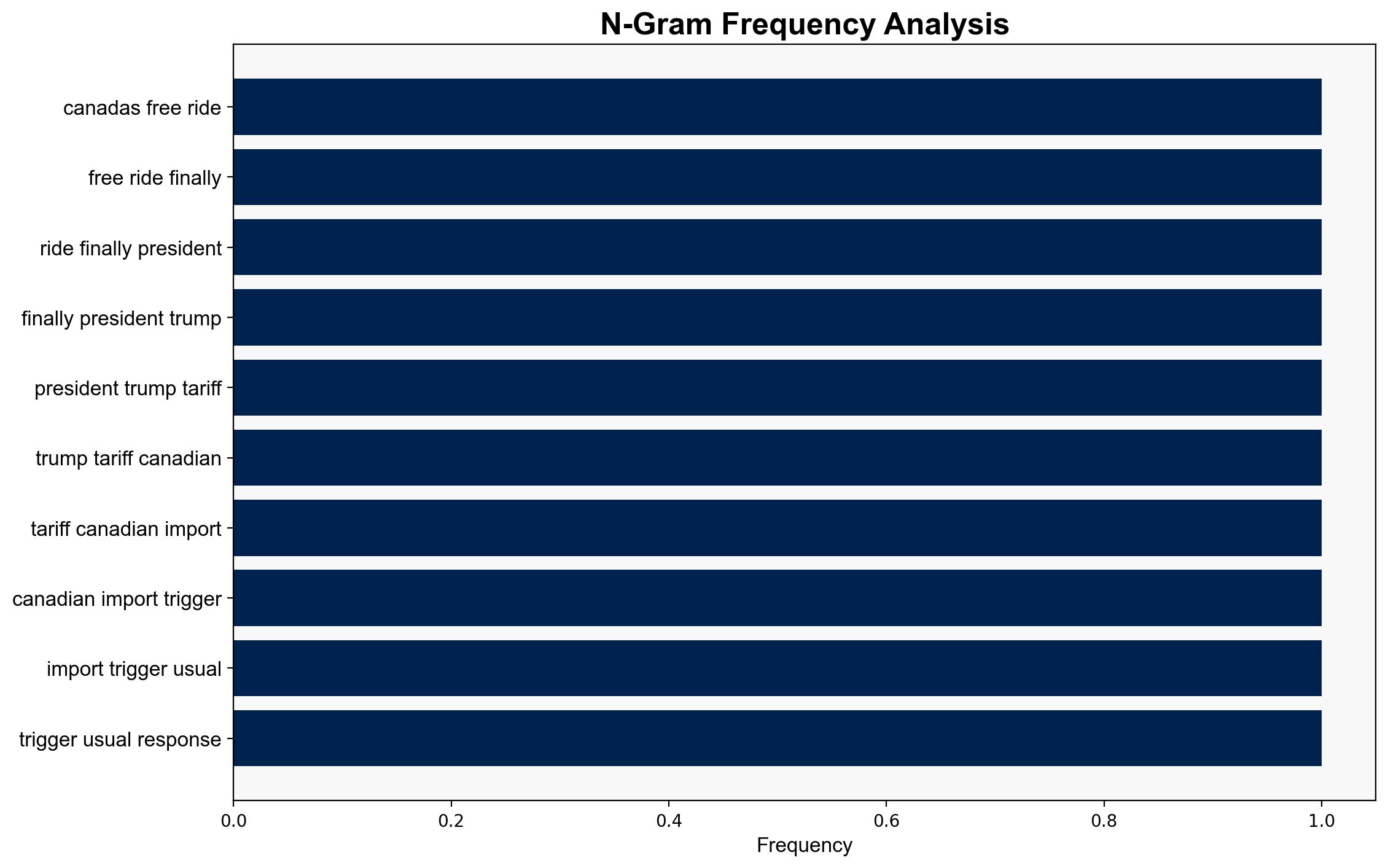Canadas Free Ride Is Finally Over – Americanthinker.com
Published on: 2025-04-15
Intelligence Report: Canadas Free Ride Is Finally Over – Americanthinker.com
1. BLUF (Bottom Line Up Front)
The imposition of tariffs by the United States on Canadian imports marks a significant shift in the bilateral relationship, signaling the end of a period where Canada benefited from American economic and military protection without reciprocating adequately. This move is a strategic effort by the United States to realign its alliances and demand accountability. The current Canadian leadership, under Mark Carney, faces the challenge of addressing longstanding issues in defense spending, trade relations, and foreign policy alignment. Immediate actions are required to mitigate the economic impact and restore diplomatic balance.
2. Detailed Analysis
The following structured analytic techniques have been applied for this analysis:
General Analysis
The United States’ decision to enforce a 25% tariff on Canadian exports is a calculated measure to address years of perceived strategic freeloading by Canadian leaders. Historically, Canada has underperformed in meeting NATO defense spending commitments, with expenditures hovering around 1.3% of GDP. Additionally, Canada’s military capabilities have deteriorated, affecting its ability to contribute to international security efforts. The tariffs are a response to these deficiencies, as well as to Canada’s diplomatic and economic engagements with China, which have raised concerns in Washington. The current leadership must navigate these challenges to prevent further economic and diplomatic fallout.
3. Implications and Strategic Risks
The imposition of tariffs poses significant risks to Canada’s economic stability, potentially leading to increased costs for consumers and businesses. The strained trade relationship could also impact regional stability, as Canada may seek alternative alliances or trade partners. National security risks are heightened by Canada’s inadequate defense spending and military capabilities, which may undermine its ability to fulfill international commitments. The influence of foreign powers, particularly China, in Canadian politics and infrastructure remains a critical concern, potentially affecting domestic and international policy decisions.
4. Recommendations and Outlook
Recommendations:
- Increase defense spending to meet NATO commitments and enhance military capabilities.
- Strengthen trade relations with the United States through diplomatic engagement and policy reforms.
- Implement measures to reduce foreign influence in domestic affairs, particularly from China.
- Develop a comprehensive strategy to diversify economic partnerships and reduce dependency on any single nation.
Outlook:
Best-case scenario: Canada successfully negotiates with the United States to reduce tariffs by demonstrating increased defense spending and policy alignment, leading to improved bilateral relations.
Worst-case scenario: Continued economic strain from tariffs leads to a recession, further weakening Canada’s defense and diplomatic standing.
Most likely scenario: Canada makes incremental policy adjustments to address U.S. concerns, resulting in a gradual easing of tariffs and stabilization of trade relations.
5. Key Individuals and Entities
The report mentions significant individuals such as Justin Trudeau and Mark Carney. These individuals are central to the current geopolitical and economic dynamics between Canada and the United States. Their actions and decisions will play a crucial role in shaping the future of bilateral relations and addressing the challenges outlined in this report.





